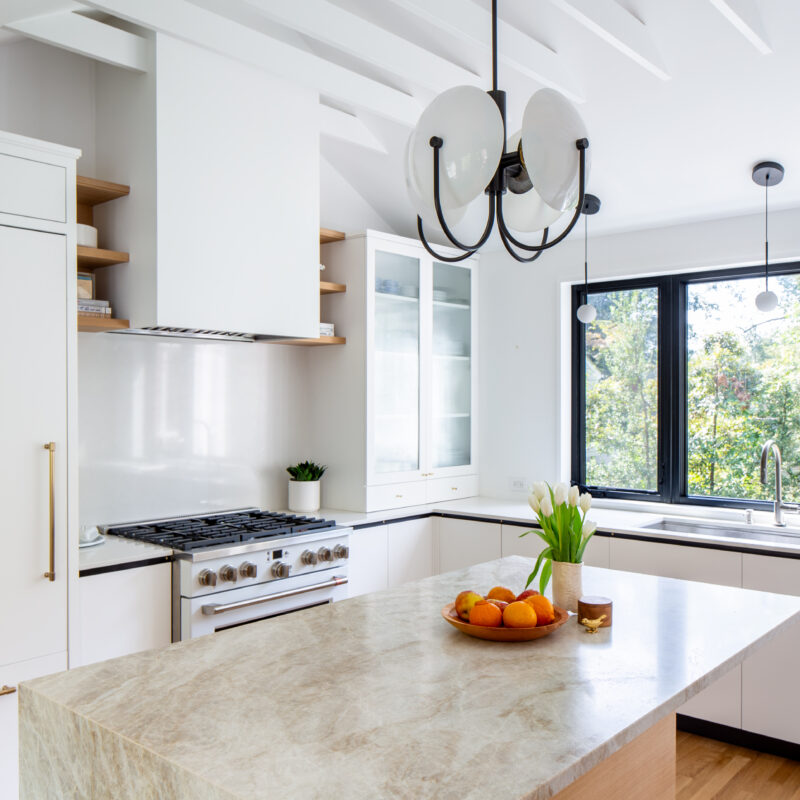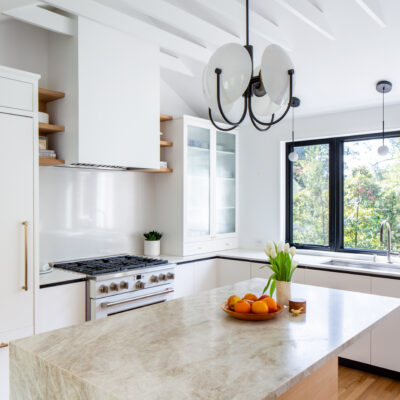Home locking technology hadn’t changed much for more than a century—until a few years ago.
The advent of the smart home gave folks the ability to take their front door security, and locks in general, out of the dark ages. Keyless entry houses are still buttoned up with the standard pin tumblers invented in the late 1800s, but homeowners are able to access them through a secure web connection from anywhere in the world.
“We’re probably putting keyless entry in on 10 percent of all projects where we’re doing networking,” says Nick Falzman, CEO of local residential automation provider Appalachian Home Technologies. “Five years ago, it was more like 1 to 2 percent. It really wasn’t a great solution.”
Stay secure
Some homeowners might be wary of throwing their lock and key to the cloud, so first thing’s first: Is keyless entry secure?
“You have all of your firewalls protecting you just as you would from any other cyber attack,” Falzman says. “All the information is encrypted, so you have a couple layers of defense.”
Falzman says the responsibility for holding your lock data safe mostly falls on the electronic lock provider. And those companies, many of which are legacy firms like Schlage, Yale and Kwikset, keep everything on a secure server.
Scott Megahan, owner of Albemarle Lock & Safe, is more old school than Falzman—his son handles most of the IT side of the business—and he’s somewhat skeptical of keyless entry tech. Fortunately, almost every system comes with a mechanical override, he says.
Key benefits
If you’re willing to open the door to keyless entry, convenience and customizability can be yours. Locking yourself out of the house will be a thing of the past, and parents can monitor the comings and goings of their kids.
What’s more, Falzman says homeowners can set timers and access windows, giving temporary codes to housekeepers, handymen and the like.
And keyless entry can be used to trigger a host of responses. “Other items can go off in the house. In my house, when I lock the front door it turns off all the lights and sets the HVAC to a certain temperature,” he says. “Unlocking the door can be a trigger to other things, like mixing you a drink. I am dead serious.”
Indeed, Falzman says keyless entry can be a gateway network. He’ll see homeowners buy a keyless lock on a whim and end up linking all their home electronics. For those who go all the way with networking, he recommends using a single app, such as Control4, to manage everything around the home.
Pushing forward
While keyless home entry has grown a lot in the last several years, it has a long way to go to keep up with the industry leader, according to Megahan.
“Cars have changed immensely,” he says. “You are seeing keyless entry on everything, even lower-end cars. Every three to six months, you have to learn something new. It changes that fast.” That’s good news for homeowners, Megahan says, as it’s driving the technology further and further.
For Falzman, the user-friendliness of the apps and networking tools throughout the home are what stand to change keyless entry the most. As people become more and more comfortable putting their locks on a network, he says you’ll see keyless options throughout the home —on gun closets, medicine chests, liquor cabinets and storage rooms.
Oh, and those unlocking mechanisms tied to one’s unique biology you see in TV and movies? Those are hardly science fiction, according to Megahan, and they could be paired with keyless devices. “We’ve done several biometric locks,” he says. “Retina is a great way to go.”
Key points
At Mr. Jefferson’s university, student dormitories are going keyless. With every door in each building accessible through a single hub, university admins can change access codes and allow or restrict entry at certain times with a mouse click. SG





